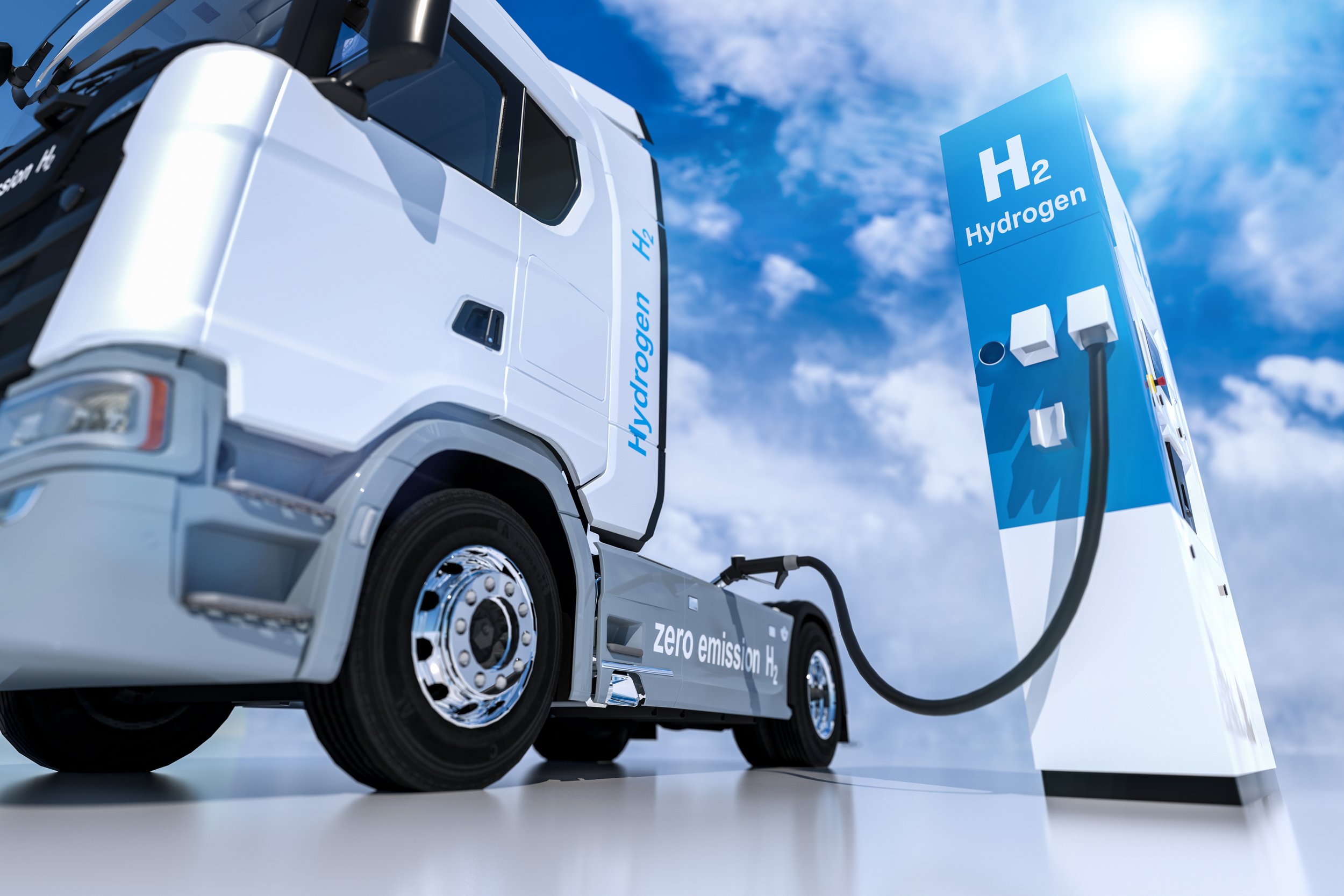
Why Hydrogen?
Hydrogen offers a promising alternative fuel for the transportation sector, especially in applications where electric vehicles (EVs) may not be the most viable solution. Here are the key benefits and considerations for hydrogen in transportation:
1. Zero Emissions at the Tailpipe
Hydrogen-powered vehicles, particularly Fuel Cell Electric Vehicles (FCEVs), emit only water vapor and heat at the tailpipe. This makes them an excellent option for reducing air pollution and greenhouse gas emissions, contributing to cleaner air in urban areas and helping meet stringent environmental standards.
2. Longer Range and Faster Refueling
FCEVs offer a driving range comparable to conventional gasoline vehicles, typically exceeding 300 miles on a single tank. Unlike battery-electric vehicles (BEVs), which can take hours to recharge, hydrogen refueling takes just 3-5 minutes, making it much more suitable for long-distance travel and heavy-duty applications like trucks, buses, and trains, where fast refueling is crucial.
3. High Energy Density
Hydrogen has a higher energy density per weight compared to batteries, meaning it can store and deliver more energy for the same weight. This makes hydrogen particularly beneficial for heavy-duty and long-haul transportationmodes, including trucks, ships, and even airplanes, where the added weight of large batteries would reduce efficiency.
4. Scalability for Fleet and Industrial Applications
Hydrogen is especially promising for fleet operations, such as public transit buses, delivery vehicles, and large freight operations. Fleet operators benefit from centralized refueling infrastructure, making hydrogen a practical solution for reducing emissions across multiple vehicles while maintaining operational efficiency.
5. Support for Decarbonizing Hard-to-Electrify Sectors
Hydrogen is a viable solution for transportation sectors that are difficult to electrify with batteries alone, such as heavy-duty trucks, shipping, aviation, and rail. These industries need a dense and lightweight energy source, which hydrogen provides, offering a path toward decarbonization where BEVs fall short.
6. Utilization of Renewable Energy for Production
Hydrogen can be produced using renewable energy through electrolysis, where water is split into hydrogen and oxygen using electricity from wind, solar, or hydropower. When produced this way, hydrogen is known as green hydrogen, offering a carbon-neutral fuel option. Green hydrogen also provides a way to store excess renewable energy, which can be used to power transportation when needed.
7. Energy Security and Diversification
Hydrogen can be produced from a variety of domestic sources, including water and natural gas, offering energy security by reducing reliance on imported fossil fuels. Hydrogen production from renewable sources also diversifies the energy mix, ensuring more resilient energy systems for transportation.
8. Reduced Dependency on Lithium and Rare Earth Materials
Unlike BEVs, which rely heavily on lithium, cobalt, and other rare earth materials for battery production, FCEVs use hydrogen fuel cells that require fewer critical materials. This reduces the transportation sector's dependency on finite mineral resources and the environmental impact associated with mining and battery disposal.
9. Synergies with Other Sectors
Hydrogen can play a key role in creating an integrated energy system by supporting other sectors, such as energy storage and industrial applications. For example, hydrogen-powered vehicles can contribute to vehicle-to-grid (V2G)technologies, where excess energy from renewable hydrogen production can be fed back into the grid, improving energy management and grid stability.
10. Incentives and Government Support
Many governments are investing in hydrogen infrastructure as part of their broader decarbonization strategies. For example, countries in Europe, Japan, and the U.S. are providing subsidies, tax credits, and grants for hydrogen refueling stations and the development of hydrogen-powered vehicles. These incentives aim to accelerate hydrogen adoption in transportation.
11. Resilience in Extreme Temperatures
FCEVs tend to perform better than BEVs in extreme cold or hot weather, where battery efficiency can suffer. Hydrogen fuel cells generate heat during operation, making them less susceptible to performance degradation in cold climates, which is advantageous for transportation in regions with harsh weather conditions.
12. Complementing Battery-Electric Vehicles (BEVs)
Rather than competing, hydrogen and electric technologies can complement each other. Hydrogen is well-suited for heavy-duty and long-range transportation, while BEVs work efficiently for shorter-range and lighter applications. Together, these technologies can cover the full spectrum of transportation needs, reducing emissions across all sectors.
Challenges and Considerations
While hydrogen offers many advantages, there are still challenges to widespread adoption, including:
Infrastructure development: Hydrogen refueling stations are less common than EV charging stations, although significant investments are being made to expand this network.
Cost of green hydrogen production: Producing hydrogen from renewable energy (green hydrogen) is currently more expensive than using natural gas (gray hydrogen). However, costs are expected to decrease as technology improves and economies of scale are realized.
Hydrogen-powered transportation is a promising solution, especially for heavy-duty, long-range, and industrial applications. With continued advancements in hydrogen production, storage, and refueling infrastructure, hydrogen can play a crucial role in decarbonizing the transportation sector and achieving global sustainability goals.
